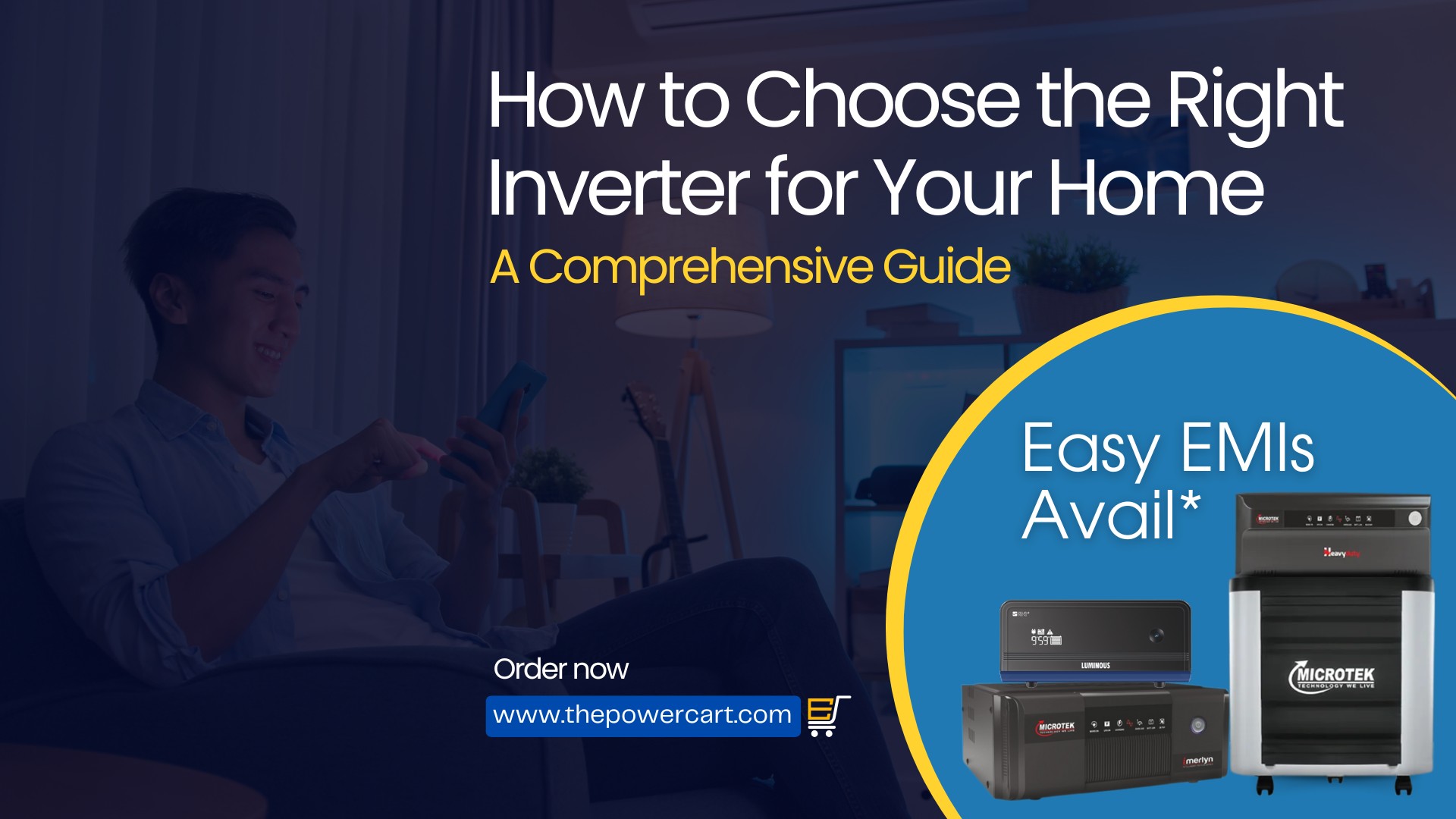
In a world where power outages can disrupt daily life, having a reliable power backup system is crucial. An inverter is one of the most effective solutions for uninterrupted power supply during outages. However, choosing the right inverter for your home requires careful consideration of several factors. In this comprehensive guide, we’ll walk you through everything you need to know to make an informed decision.
1. Understand Your Power Requirements
The first step in choosing the right inverter is understanding your power needs. Calculate the total wattage of the appliances and devices you want to run during a power outage. Common household items like lights, fans, TVs, and refrigerators consume varying amounts of power. Summing up these wattages will give you a clear idea of the inverter capacity you require.
Tip: Make a list of essential appliances you want to power during an outage and add up their wattages. This will help you determine the inverter’s VA (Volt-Ampere) rating that suits your needs.
2. Choose the Right Inverter Type
Inverters come in different types, each designed for specific needs:
- Pure Sine Wave Inverters: Ideal for sensitive appliances like computers, medical equipment, and home theaters, these inverters provide a consistent and clean power supply similar to that of the grid.
- Modified Sine Wave Inverters: Suitable for basic appliances like lights and fans, these inverters are more affordable but may not be compatible with all devices.
- Square Wave Inverters: The most basic type, usually found in lower-cost models, is suitable for simple devices but may cause issues with more sophisticated electronics.
Tip: If your budget allows, opt for a pure sine wave inverter, as it is compatible with all appliances and provides a stable power supply.
3. Consider the Battery Type and Capacity
The battery is the heart of the inverter system. The right battery will ensure that your inverter runs efficiently for extended periods. There are two main types of batteries:
- Lead-Acid Batteries: These are the most common and affordable option. They require regular maintenance but are reliable for most home applications.
- Lithium-Ion Batteries: More expensive but require less maintenance and have a longer lifespan. They are also lighter and more efficient.
Tip: Choose a battery with a capacity (measured in Ah) that matches your power requirements. Higher Ah means longer backup time.
4. Check the Inverter’s Efficiency and Features
Efficiency is crucial when selecting an inverter. Look for inverters with high efficiency ratings, as they will convert more of the battery’s stored power into usable electricity. Additionally, consider the following features:
- Overload Protection: Prevents the inverter from damage in case of a sudden surge in power demand.
- Auto Restart: Automatically switches on the inverter when the power goes out.
- Battery Charging Indicators: Displays the battery’s charging status, helping you monitor its health.
Tip: Inverters with additional features like LCD displays and remote monitoring can offer more convenience and control.
5. Brand Reputation and Warranty
When investing in an inverter, choosing a reputable brand is important. Reliable brands often provide better after-sales service, quality assurance, and warranties. A good warranty period (typically 2-5 years) ensures that you are covered in case of any manufacturing defects or issues.
Tip: Read customer reviews and ask for recommendations to find the most trusted inverter brands.
6. Installation and Maintenance
Proper installation is key to the efficient operation of your inverter. It’s recommended to have your inverter installed by a professional to ensure all connections are secure and the system is configured correctly. Regular maintenance, especially for lead-acid batteries, will prolong the life of your inverter and ensure optimal performance.
Tip: Schedule periodic maintenance checks to keep your inverter system in top condition.
Conclusion
Choosing the right inverter for your home is an investment in comfort and convenience during power outages. By understanding your power requirements, selecting the appropriate inverter type, and considering factors like battery capacity, efficiency, and brand reputation, you can ensure that you’re making the best choice for your home. Explore a wide range of inverters on The Power Cart and find the perfect match for your needs today.
-829x301.png)

1 Comment(s)
thank you for sharing this helpful guides.
Leave a Comment